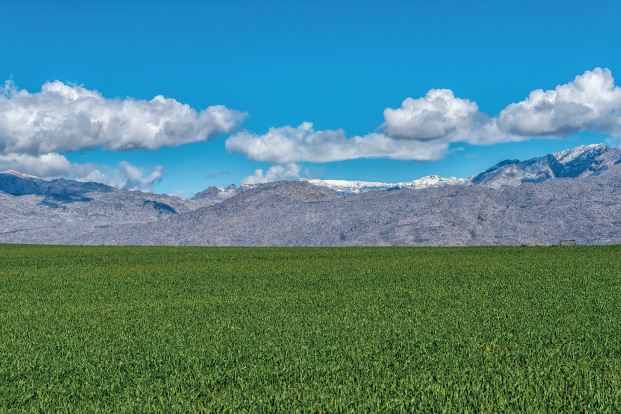Sugar futures surge to 4-year high

Sugar cane production declines
June 30, 2016
South Africa: Lemon estimate cut, Navels tailing off fast
July 8, 2016Sugar and coffee futures soared, as the currency of top grower Brazil rallied, while wheat prices slumped as the market remains glutted, with fresh US stocks data out on Thursday. Raw sugar futures shot up more than 6%, fuelled as strength in the real out of its previous trading range, to its highest level in four years. Raw sugar prices are now on track to close the quarter up 36%.
Brexit panic ebbs
Soft commodity futures gained support from an improving broad market outlook, as world attention drifts from the UK Brexit vote, for now. The CRB core commodities index, which fell sharply on Friday and Monday, is now back up to where it stood before the shock referendum result on Thursday, up 1.6% on the day. Oil prices have recovered their equilibrium, with August Brent crude futures up 3.4%, to $50.25 a barrel.
Real surges ahead
And prices of sugar and coffee got and extra boost, as the Brazilian currency reached new one-year highs. The move puts pressure on exporters in Brazil, which is by a large margin the top exporter of both commodities, discouraging exports and investment. And as CBA’s Tobin Gorey noted, “a stronger Real means Brazilian mills now have less incentive to produce sugar relative to ethanol,” as most ethanol is consumed locally as road fuel, while most sugar is exported.
Central bank sits on its hands
The Brazilian real has been on a tear so far this year, up 22% so far, despite ongoing political turmoil and an economy that is still in the midst of a huge recession. The real’s strength stems from ideas that the ongoing impeachment of president Dilma Rousseff may deliver a more market-friendly, or perhaps merely more stable and popular, administration. And markets are now pricing in the possibility of fresh fiscal stimulus across the developed world, even as the Brazilian central bank holds on to very high interest rates, which is seen as likely to attract outside investors.
Despite maintaining the high interest rates, the Brazilian central bank has been pushing hard on the brakes of the rally through currency swaps interventions, in a bid support local-currency returns from exports. But the bank has kept to the side-lines so far this week, raising ideas that a freer exchange rate will be seen from now on. The real was up 1.9% against the dollar in afternoon markets, at its highest level in a year.
French concerns
Mr Gorey also noted sugar production concerns in France. “France’s sugar beet crop continues to suffer from excessively wet conditions. “While drier weather is forecast to evolve this week, plant development is now about two weeks behind schedule – long enough to threaten EU sugar output,” he said.
Bearish data expected
Sugar futures are also getting support from the idea that data from the Brazilian cane body Unica on harvest progress in the first half of July will prove bullish. The release is scheduled for Thursday, although in reality these releases have proved to be very much a movable feast, despite the supposed introduction of a rigid schedule for this season. “It is expected to be a bullish report in that, given the rainy weather during the period, the numbers will be down,” said Nick Penney, at Sucden Financial. “The numbers should already be written into the price but values seem to be rising anyway,” he said. October raw sugar futures settled up 5.4%, at 21.01 cents, after reaching as high as 21.20 cents, a four year high for the second month contract.
Quality concerns in Brazil
Arabica coffee futures surged as well, thanks to the currency effects as well as crop concerns from Brazil, where further rains have been forecast. “The rains would further complicate an already difficult harvest and add to problems for the coffee producers there,” said Jack Scoville, at Sucden Financial. “Producers had to deal with dry weather as the cherries developed, then rains as the harvest got started, then a freeze, and now maybe more rains,” he said. “There could be additional quality and yield losses if the rains show up.” September arabica settled up 2.7%, at 144.45 cents a pound, a month and a half high. September robusta settled up 1.2%, at $1,722 a tonne.
The same old story
But grain markets sunk, ahead of a slew of US government data out on Thursday, including updated US sowings estimates, and grain stocks estimates. Wheat prices in continued their downward trek, on the continued bearish fundamentals. “The wheat market continues to be in a spiral downward as world prices seem to drop every night with wheat supplies overwhelming,” said Darrel Holaday, at Country Futures. “This is an old story, but it is a true story.”
EU prospects raised
The European grain lobby Coceral raised its forecast for 2016 soft wheat production in the EU to 148.0m tonnes, 2.8m tonnes up from its initial outlook in March. December Paris wheat prices closed down 1.8%, at a contract low of E162.00 a tonne. In Chicago September wheat futures, the most widely traded contract, finished down 2.8%, at $4.40 ½ a bushel. Second-month Chicago wheat futures have only traded lower for one session in the last six years.
Weather fears lessen day by day
US corn prices were down, despite expectations that the latest acreage report would reveal that much less corn was sown than forecast at the start of the campaign. Corn prices lagged far behind soybeans through most of the sowing session, as South American disruptions boosted prices for the oilseed. But corn markets are now rapidly drawing back as the threat of dry weather next month recedes.
Ethanol prices fell, as weekly stocks of the corn-based biofuel rose 57,000 barrels, to 21.17m barrels. Ethanol output rose by 41,000 barrels per day, to 21.17m barrels. August ethanol futures fell 0.7%, to $1.588 a gallon. December corn futures finished down 2.7%, at $3.83 a bushel.
Soybeans more stable
Soybean prices showed some strength compared to other grains, despite expectations of a sharp upward revision to US soybean acres in Thursday report. There was support from the rising real, as Brazil is also a major soybean grower and exporter, as well as strong Chinese soybean prices. August soybean futures fell by 0.4%, to finish at $11.40 ½ a bushel.
Source: Farming Portal



